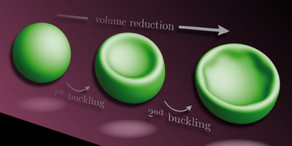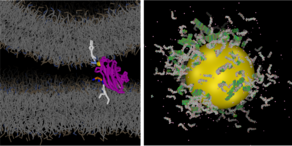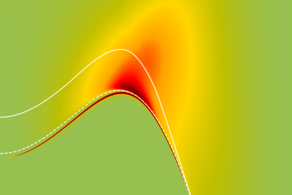Finite pulses open the door for phonons to degrade entanglement
- Reiter

A new publication in Phys. Rev. B by the Reiter group
Last year, we showed that the two-photon excitation of a quantum dot sets a limit to the maximally achievable degree of entanglement. Because the excitation process results in Stark shifts of the single exciton levels in the quantum dots, it induces a which-path information, hence, reduces the achievable concurrence. In other words, the excitation breaks the symmetry of the biexciton-exciton system.
Strikingly, this opens the door for another detrimental mechanisms to degrade the entanglement even further: Now the quantized lattice vibrations, i.e., the phonons, can lead to re-excitations in the system thereby creating photon pairs with different polarization unwanted in the entanglement generation. This is remarkable, because without the asymmetry caused by the excitation, the phonons should not affect the entanglement. The phonons also introduce a temperature dependency leading to even worse entanglement degree at higher temperatures.
This calls for new excitation schemes to be considered to generate perfectly entangled photons from quantum dots.
The paper results from a collaboration the Rastelli group in Linz and the theoretical group from Martin Axt from Bayreuth. We also want to acknowledge the contribution of Tim Seidelmann, who just finished his PhD at University of Bayreuth! Congratulations to Tim!
Go to Publication in Phys. Rev. B







